The quest to power America with angel farts went off the rails when the researchers confined their search to the grounds of The (former) White House.
Navigation
Install the app
How to install the app on iOS
Follow along with the video below to see how to install our site as a web app on your home screen.

Note: This feature currently requires accessing the site using the built-in Safari browser.
More options
You are using an out of date browser. It may not display this or other websites correctly.
You should upgrade or use an alternative browser.
You should upgrade or use an alternative browser.
Advances in batteries/energy thread
- Thread starter ScienceRocks
- Start date
ScienceRocks
Democrat all the way!
- Thread starter
- Banned
- #342
The quest to power America with angel farts went off the rails when the researchers confined their search to the grounds of The (former) White House.
What a dumb fucker you're. A human joke.
Wonderful new lighter powered by a single lithium battery.
Only issue is it decides on its own when it wants to set fire to something.
Only issue is it decides on its own when it wants to set fire to something.
Old Rocks
Diamond Member
All of which is supposed to mean what? Your posts are beginning to sound like the ramblings of someone deep into dementia.Wonderful new lighter powered by a single lithium battery.
Only issue is it decides on its own when it wants to set fire to something.
Lithium batteries are here until replaced by something better.
ScienceRocks
Democrat all the way!
- Thread starter
- Banned
- #345
Samsung unveils higher capacity Lithium ion batteries for electric bikes to provide 100 kilometer range in one charge
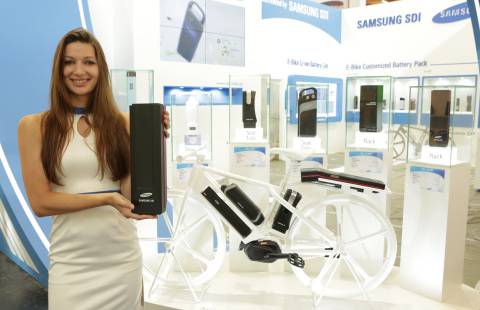
Samsung SDI already had high capacity 2.9 Ah (29E) cells for E-bikes. High capacity cells such as 2.9 Ah improve the driving distance of the E-bike and provide convenience to the customers. Samsung SDI unveiled a 500Wh e-bike Li-ion battery pack that can run for 100 km on a single battery charge. Samsung SDI is exhibiting six types of standardized...

Samsung SDI already had high capacity 2.9 Ah (29E) cells for E-bikes. High capacity cells such as 2.9 Ah improve the driving distance of the E-bike and provide convenience to the customers. Samsung SDI unveiled a 500Wh e-bike Li-ion battery pack that can run for 100 km on a single battery charge. Samsung SDI is exhibiting six types of standardized...
ScienceRocks
Democrat all the way!
- Thread starter
- Banned
- #346
Quantum dot solar cell exhibits 30-fold concentration
Quote
By combining designer quantum dot light-emitters with spectrally matched photonic mirrors, a team of scientists with Berkeley Lab and the University of Illinois created solar cells that collect blue photons at 30 times the concentration of conventional solar cells, the highest luminescent concentration factor ever recorded. This breakthrough paves the way for the future development of low-cost solar cells that efficiently utilize the high-energy part of the solar spectrum.
“We’ve achieved a luminescent concentration ratio greater than 30 with an optical efficiency of 82-percent for blue photons,” says Berkeley Lab director Paul Alivisatos, who is also the Samsung Distinguished Professor of Nanoscience and Nanotechnology at the University of California Berkeley, and director of the Kavli Energy Nanoscience Institute (ENSI), was the co-leader of this research. “To the best of our knowledge, this is the highest luminescent concentration factor in literature to date.”
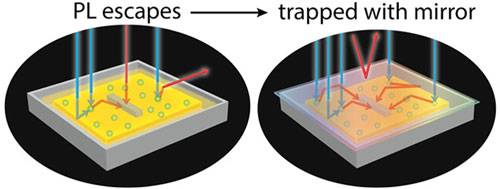
Quote
By combining designer quantum dot light-emitters with spectrally matched photonic mirrors, a team of scientists with Berkeley Lab and the University of Illinois created solar cells that collect blue photons at 30 times the concentration of conventional solar cells, the highest luminescent concentration factor ever recorded. This breakthrough paves the way for the future development of low-cost solar cells that efficiently utilize the high-energy part of the solar spectrum.
“We’ve achieved a luminescent concentration ratio greater than 30 with an optical efficiency of 82-percent for blue photons,” says Berkeley Lab director Paul Alivisatos, who is also the Samsung Distinguished Professor of Nanoscience and Nanotechnology at the University of California Berkeley, and director of the Kavli Energy Nanoscience Institute (ENSI), was the co-leader of this research. “To the best of our knowledge, this is the highest luminescent concentration factor in literature to date.”

ScienceRocks
Democrat all the way!
- Thread starter
- Banned
- #347
High-efficiency, semi-transparent perovskite/graphene solar cells created at low cost

- Colin Jeffrey
- September 11, 2015
- 3 PICTURES
With the continued rise in the uptake of solar cells, consumers are now looking at less obtrusive ways to incorporate these in buildings and vehicles. Transparent or semi-transparent cells provide greater flexibility and visual appeal than standard, opaque silicon solar cells, however their relatively high-cost and poor efficiencies have meant that their adoption has been slow. To help remedy this, researchers working at the Hong Kong Polytechnic University (PolyU) have created semi-transparent, efficient, low-cost perovskite solar cells with graphene
ScienceRocks
Democrat all the way!
- Thread starter
- Banned
- #348
Maximizing Energy from Solar Panels on Slanted Roofs with kirigami shapechanging solar cells
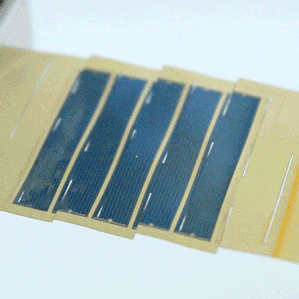

Researchers have shown a new way to help solar cells track the sun as it moves across the sky, which could boost a panel’s energy generation by 40 percent. Most of the solar panels in the world sit on rooftops at a fixed angle, so they miss out on capturing energy during parts of every day. Now researchers have shown that by cutting solar...
ScienceRocks
Democrat all the way!
- Thread starter
- Banned
- #349
This transparent solar-powered battery looks like a futuristic Tony Stark invention
Quote
Remember Iron Man’s transparent smartphones? They might become reality sooner than you think thanks to an unusual new type of battery that’s not only transparent, but it can also charge via solar power. The technology could also be used for other products in the future, such as smart office and home windows that would be able to let the sun’s light pass through them, but also recharge and store energy.
Developed by a team of researchers at the Kogakuin Univeristy, the lithium ion battery is not entirely transparent, as it contains the same chemical compounds that make any battery work. Furthermore, when exposed to sunlight, the battery becomes slightly tinted, transmitting 30% less light – but it’s still transparent. When fully discharged, the light transmittance rises to approximately 60 percent,TechXplore reports.
To pull these tricks off, the team of scientists shrunk down the electrodes, all the way down to around 80-90nm, to allow light to pass through.
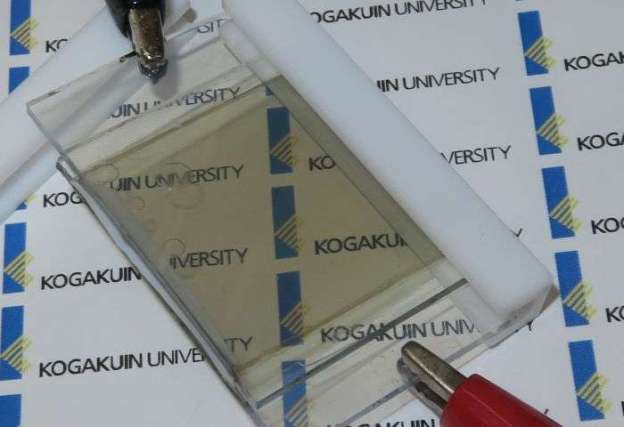
Image Source: Screenshot
Quote
Remember Iron Man’s transparent smartphones? They might become reality sooner than you think thanks to an unusual new type of battery that’s not only transparent, but it can also charge via solar power. The technology could also be used for other products in the future, such as smart office and home windows that would be able to let the sun’s light pass through them, but also recharge and store energy.
Developed by a team of researchers at the Kogakuin Univeristy, the lithium ion battery is not entirely transparent, as it contains the same chemical compounds that make any battery work. Furthermore, when exposed to sunlight, the battery becomes slightly tinted, transmitting 30% less light – but it’s still transparent. When fully discharged, the light transmittance rises to approximately 60 percent,TechXplore reports.
To pull these tricks off, the team of scientists shrunk down the electrodes, all the way down to around 80-90nm, to allow light to pass through.

Image Source: Screenshot
ScienceRocks
Democrat all the way!
- Thread starter
- Banned
- #350
Bosch claims they will commercialize 400 watt hour per kilogram solid state batteries at half the price of todays batteries by 2020
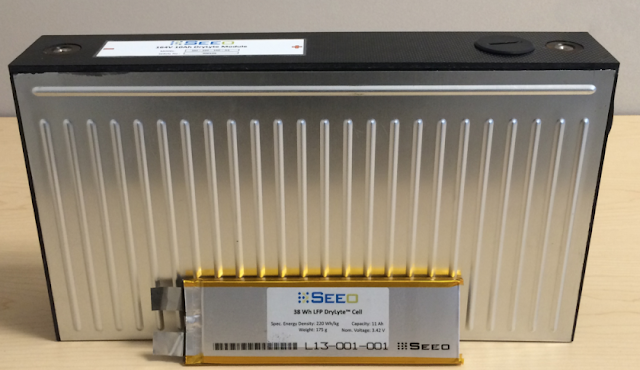

German company Bosch acquired California Battery startup Seeo. Seeo submitted batteries for official testing late last year, claiming an energy density of 220 watt-hours per kilogram. CEO Hal Zarem told GigaOm's Katie Fehrenbacher that the company had "started working on a second-generation battery" which will have an energy density of 400...
ScienceRocks
Democrat all the way!
- Thread starter
- Banned
- #351
A rechargeable battery to power a home from rooftop solar panels
A team of Harvard scientists and engineers has demonstrated a rechargeable battery that could make storage of electricity from intermittent energy sources like solar and wind safe and cost-effective for both residential and ...
A team of Harvard scientists and engineers has demonstrated a rechargeable battery that could make storage of electricity from intermittent energy sources like solar and wind safe and cost-effective for both residential and ...
ScienceRocks
Democrat all the way!
- Thread starter
- Banned
- #352
Bill Gates Terrapower and China national nuclear corp will build a prototype traveling wave reactor- a liquid sodium-cooled fast reactor
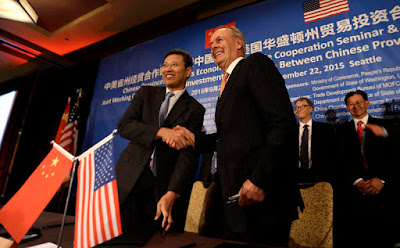
Bill Gate’s efforts to close a deal with China National Nuclear Corp. have finally paid off. The company has inked a deal to build a first-of-a-kind unit of their sodium cooled fast reactor in China and then manufacture a commercial version of it. Zhimin Qian, President of China National Nuclear Corp. signed the deal with Lee McIntire,...

Bill Gate’s efforts to close a deal with China National Nuclear Corp. have finally paid off. The company has inked a deal to build a first-of-a-kind unit of their sodium cooled fast reactor in China and then manufacture a commercial version of it. Zhimin Qian, President of China National Nuclear Corp. signed the deal with Lee McIntire,...
30 year chrysler mechanic
Member
- Sep 18, 2015
- 49
- 4
- 6
4 times range . take tesla's battery pack a nitrogen cooled sc motor and put it to a series hydraulic hybrid .New all-solid sulfur-based battery outperforms lithium-ion technology
New all-solid sulfur-based battery outperforms lithium-ion technology
Scientists at the Department of Energy's Oak Ridge National Laboratory have designed and tested an all-solid lithium-sulfur battery with approximately four times the energy density of conventional lithium-ion technologies that power today's electronics.
The ORNL battery design, which uses abundant low-cost elemental sulfur, also addresses flammability concerns experienced by other chemistries.
The new ionically-conductive cathode enabled the ORNL battery to maintain a capacity of 1200 milliamp-hours (mAh) per gram after 300 charge-discharge cycles at 60 degrees Celsius. For comparison, a traditional lithium-ion battery cathode has an average capacity between 140-170 mAh/g. Because lithium-sulfur batteries deliver about half the voltage of lithium-ion versions, this eight-fold increase in capacity demonstrated in the ORNL battery cathode translates into four times the gravimetric energy density of lithium-ion technologies, explained Liang.
Although the team's new battery is still in the demonstration stage, Liang and his colleagues hope to see their research move quickly from the laboratory into commercial applications. A patent on the team's design is pending.
Imagine a electric car with 4 times the range!
best battery ever designed= stable plasma spiral electron torid. go to nasa institute for advanced concepts, click on funded studies and toward bottom of list article on low cost transportation to mars by clint seward. the reason fusion energy research is still alive is this battery is only man made object that can survive long enough to deliver fuel to reactor.
13 years ago or so when it was invented.
ScienceRocks
Democrat all the way!
- Thread starter
- Banned
- #354
Near term Commercial Fusion Power Possible - Laser induced fusion of ultra-dense deuterium with double net energy gain has been produced and gain of 20 times is within reach
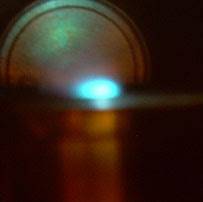

Researchers at the University of Gothenburg and the University of Iceland are researching a new type of nuclear fusion process. This produces almost no neutrons but instead fast, heavy electrons (muons), since it is based on nuclear reactions in ultra-dense heavy hydrogen (deuterium). The new fusion process can take place in relatively small...
30 year chrysler mechanic
Member
- Sep 18, 2015
- 49
- 4
- 6
Near term Commercial Fusion Power Possible - Laser induced fusion of ultra-dense deuterium with double net energy gain has been produced and gain of 20 times is within reach

Researchers at the University of Gothenburg and the University of Iceland are researching a new type of nuclear fusion process. This produces almost no neutrons but instead fast, heavy electrons (muons), since it is based on nuclear reactions in ultra-dense heavy hydrogen (deuterium). The new fusion process can take place in relatively small...
30 year chrysler mechanic
Member
- Sep 18, 2015
- 49
- 4
- 6
thorium heat lazer 100,000 mile battery for cars. radiation tech. radiation to electricity battery (beta) every reactor in country has spent rods to storage capacity , why not use it in car battery and put lead on outside of battery instead of in it.
Lithium batteries are here until replaced by something better.
Pack a few in your suitcase when next you fly then get back to about those lithium batteries when you're released.
ScienceRocks
Democrat all the way!
- Thread starter
- Banned
- #358
SolarCity Unveils World’s Most Efficient Rooftop Solar Panel with 22% efficiency and lower manufacturing cost
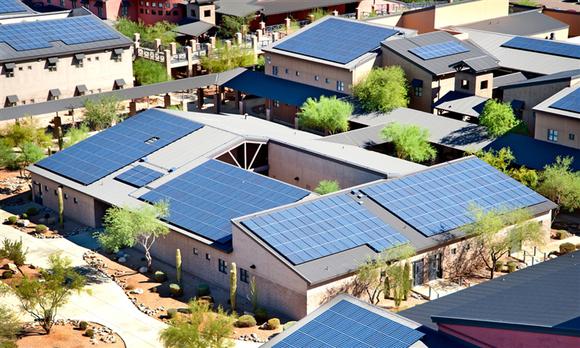
SolarCity has built the world’s most efficient rooftop solar panel, with a module efficiency exceeding 22 percent. The new SolarCity panel generates more power per square foot and harvests more energy over a year than any other rooftop panel in production, and will be the highest volume solar panel manufactured in the Western Hemisphere. SolarCity...
Read more »

SolarCity has built the world’s most efficient rooftop solar panel, with a module efficiency exceeding 22 percent. The new SolarCity panel generates more power per square foot and harvests more energy over a year than any other rooftop panel in production, and will be the highest volume solar panel manufactured in the Western Hemisphere. SolarCity...
Read more »
30 year chrysler mechanic
Member
- Sep 18, 2015
- 49
- 4
- 6
best battery you will never get hands on ( stable plasma spiral electron torid ) by clint seward of electron power systems.
read about it at nasa institute for advanced concepts under funded studies. cornerstone technology that makes fusion possible.
best solar panel = spectro lab a boeing company at 38% efficiency. again space tech = mars rover panel.
read about it at nasa institute for advanced concepts under funded studies. cornerstone technology that makes fusion possible.
best solar panel = spectro lab a boeing company at 38% efficiency. again space tech = mars rover panel.
ninja007
Gold Member
infrastructure, science, r&d.
Similar threads
- Replies
- 1
- Views
- 1K
- Replies
- 0
- Views
- 2K
- Replies
- 1
- Views
- 1K
5
- Replies
- 71
- Views
- 14K
Latest Discussions
- Replies
- 1
- Views
- 2
- Replies
- 8
- Views
- 37
- Replies
- 17
- Views
- 249
Forum List
-
-
-
-
-
Political Satire 8029
-
-
-
-
-
-
-
-
-
-
-
-
-
-
-
-
-
-
-
ObamaCare 781
-
-
-
-
-
-
-
-
-
-
-
Member Usernotes 468
-
-
-
-
-
-
-
-
-
-
